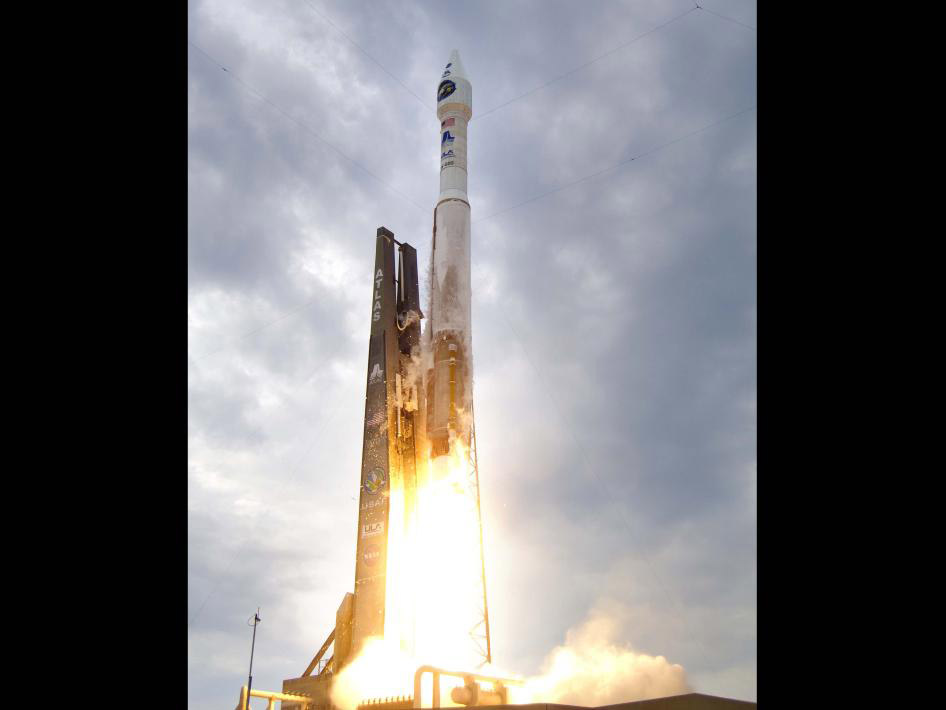Difference between revisions of "June 19, 2009"
(Created page with "__NOTOC__ =Return To the Moon, Finally= <!-- ws:start:WikiTextHeadingRule:2:<h1> --> <!-- ws:start:WikiTextLocalImageRule:8:<img src="/file/view/LPOD-June19-0...") |
|||
| Line 4: | Line 4: | ||
<!-- ws:start:WikiTextHeadingRule:2:<h1> --> | <!-- ws:start:WikiTextHeadingRule:2:<h1> --> | ||
<!-- ws:start:WikiTextLocalImageRule:8:<img src="/file/view/LPOD-June19-09.jpg/78727567/LPOD-June19-09.jpg" alt="" title="" style="width: 800px;" /> -->[[File:LPOD-June19-09.jpg|LPOD-June19-09.jpg]]<!-- ws:end:WikiTextLocalImageRule:8 --><br /> | <!-- ws:start:WikiTextLocalImageRule:8:<img src="/file/view/LPOD-June19-09.jpg/78727567/LPOD-June19-09.jpg" alt="" title="" style="width: 800px;" /> -->[[File:LPOD-June19-09.jpg|LPOD-June19-09.jpg]]<!-- ws:end:WikiTextLocalImageRule:8 --><br /> | ||
| − | <em>image by [mailto:tychocrater@yahoo.com Chuck Wood]</em><br /> | + | <em>image by [http://www.nasa.gov/ Pat Corkery, United Launch Alliance]</em><br /> |
| + | <br /> | ||
| + | On Thursday at 5:32 PM EST an Atlas V successfully launched the Lunar Reconnaissance Orbiter and Lunar Crater Observation and Sensing Satellite spacecraft on their way to the Moon. As I watched on NASA TV I discovered I was holding my breath, having waited decades for the US to finally get serious about returning to the Moon. These missions are flown by NASA's Exploration Systems Mission Directorate, not the Science Mission Directorate because they were funded is to provide the detailed practical knowledge necessary to safely return to the Moon. After one year under ESMD's control the mission will be passed over to the science community to continue to collect images and other data. These two spacecraft, assuming all works perfectly (there are rumors of a leak for LCROSS), will provide an immense amount of high resolution imagery, topography and compositional data such as we have seen transform the study of Mars. And unlike the SMART-1, Kaguya, Chandrayaan and Chang'e lunar orbiters, images from LRO will be released soon after they come in. A new epoch of lunar exploration and science begins - and we will all have ringside seats.<br /> | ||
| + | <br /> | ||
| + | <em>[mailto:tychocrater@yahoo.com Chuck Wood]</em><br /> | ||
<br /> | <br /> | ||
<strong>Related Links</strong><br /> | <strong>Related Links</strong><br /> | ||
Revision as of 19:42, 1 January 2015
Return To the Moon, Finally

image by Pat Corkery, United Launch Alliance
On Thursday at 5:32 PM EST an Atlas V successfully launched the Lunar Reconnaissance Orbiter and Lunar Crater Observation and Sensing Satellite spacecraft on their way to the Moon. As I watched on NASA TV I discovered I was holding my breath, having waited decades for the US to finally get serious about returning to the Moon. These missions are flown by NASA's Exploration Systems Mission Directorate, not the Science Mission Directorate because they were funded is to provide the detailed practical knowledge necessary to safely return to the Moon. After one year under ESMD's control the mission will be passed over to the science community to continue to collect images and other data. These two spacecraft, assuming all works perfectly (there are rumors of a leak for LCROSS), will provide an immense amount of high resolution imagery, topography and compositional data such as we have seen transform the study of Mars. And unlike the SMART-1, Kaguya, Chandrayaan and Chang'e lunar orbiters, images from LRO will be released soon after they come in. A new epoch of lunar exploration and science begins - and we will all have ringside seats.
Chuck Wood
Related Links
ESMD's Mike Wargo's blog about LRO and LCROSS.
COMMENTS?
Click on this icon File:PostIcon.jpg at the upper right to post a comment.



